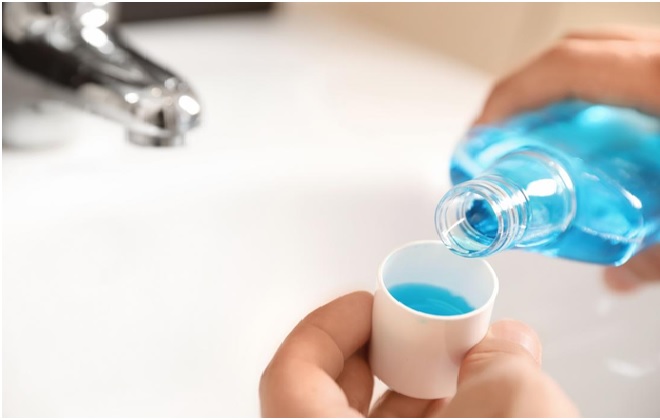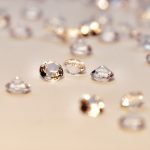
How to Use Mouthwash Safely and Properly?
Most of us use mouthwash majorly for two reasons; 1, to kill the bacteria located in the teeth and gums. 2, to maintain good breath. Besides killing bacteria and keeping good breath, mouthwash has several uses that help improve oral health.
Mouthwash, also called oral rinse or cleanse, isn’t a replacement for brushing or flossing. To get the best out of your mouthwash, you have to regularly brush and floss. Also, you have to use it correctly and safely because the different oral rise products have various ingredients, and not all of them can strengthen the teeth.
As you keep on reading, you will learn how to safely use mouth wash and a few essential aspects of using the product.
Table of Content
How to Use Mouthwash
It is best to follow the direction stated in your packaging to use the product correctly. There are different oral rinse products, and each one of them comes with specific recommendations for use. So, read the bottles of your product and follow the guidelines to be safe.
However, to stick to the subject, here are the necessary steps to follow when using most oral rinse products.
First and Foremost, Brush your Teeth
Before you use any oral cleanse product, you must brush your teeth thoroughly. Since most toothpaste kinds have fluoride in them, we suggest you wait for a few minutes before using mouthwash.
If you aren’t using fluoride toothpaste, then you can use an oral rinse immediately after brushing. I suggest you wait a while after using fluoride on your teeth because oral rinse has active ingredients that wash away the fluoride’s concentration in the paste.
Know the Amount of Mouthwash to Use
Put the product of your choice into the provided cup or any plastic measuring cup. Use the amount of concentration that the labels instruct you to use. The recommended amount of concentration to use is usually between 3 to 5 teaspoons.
Be Ready to Rinse
Once you know the amount of concentration to use, you drink up the liquid and swish it around. Be cautious to avoid swallowing any of the liquid because it isn’t meant for ingestion, and it wouldn’t be useful anymore.
While rinsing your mouth, gargle for about 20 to 30 seconds. It is best to set a timer when swishing to complete the procedure effectively.
Spit out the Liquid
After swishing for the proper amount of time, spit out the liquid in your sink.
When Do I Use Mouthwash?
Most people use oral rinse as part of their teeth care routine daily. However, you can use dental rinse as a remedy for curing bad breath. There isn’t any rule on the perfect time to use oral rinse. But it’s best to integrate dental cleanse as part of your teeth care routine to improve your oral health.
It is important to note that mouthwash wouldn’t strengthen your tooth enamel or combat gum disease except used immediately after brushing and flossing. Experts have found out that people who used mouthwash after brushing and flossing experienced better results.
How Often Should I Use Mouthwash?
Each brand works for various purposes because of the different ingredients in them. Studies have shown that oral rinse can help improve bad breath and maintain the teeth’ overall health.
It also has ingredients in them that help to prevent plaque and gingivitis. But, because there are different brands, and each of them performs better with an excellent oral hygiene routine, it isn’t easy to be specific on the amount of rinse to use or the best brands.
A scientific study conducted in the UK found out that most people in that region use mouthwash daily to treat diseases like ulcers, gum disease, and plaques. You can check this website for how to prevent dental diseases.
Oral rinse can be beneficial to the teeth’ health because it has active ingredients such as alcohol, eucalyptol, and menthol. The active ingredients in the product get to specific locations like the crevices between your teeth and other difficult places, killing the germs and bacteria gathered there.
If you notice a sting whenever you use an oral rinse, then you know there are bacteria located in hard places in your teeth, and then rinse has discovered them.
Experts have also suggested that the fluoride ingredient help strengthen tooth enamels. A 2007 study conducted on the effectiveness of dental rinse with fluoride on children showed that children who used oral rinse with fluoride ingredients were free of cavities than those who used different products without fluorides.
Fluoride is a useful ingredient in mouthwash because they absorb your teeth’ enamels allowing your teeth to be more durable and plaque-free.
Precautions to Take When Using Mouthwash
There are ingredients in mouthwash that shouldn’t be ingested because of how they interact in the body system. Ingredients such as fluoride and alcohol shouldn’t be consumed in great quantities, especially by kids.
The American Dental Association has recommended that oral rinse of any sought shouldn’t be used by children under six years of age.
Although oral rinse is recommended for adults, it is best to use it with precaution. It is advised that you seek the aid of a dentist when administering an oral rinse for yourself. You can check this link, Trysnow.com, to find out the causes of mouthwash burns and how to stop them.
If you use dental rinse specifically to treat open sores or oral lesions, you need to follow a particular dosage. For this reason, talk to a professional before using the product as they can provide you with useful info on the product and the dos and don’ts.
The Sores can be a result of several medical issues. And applying fluorides and antiseptic to it can be doing more harm than good.
Conclusion
Mouth wash can be used for different purposes. It can be used to curb bad breath, clean out plaque, and combat gum disease. Nonetheless, it is best to seek a dentist’s advice so as they can provide you with the best doses to use when using them for specific functions.


